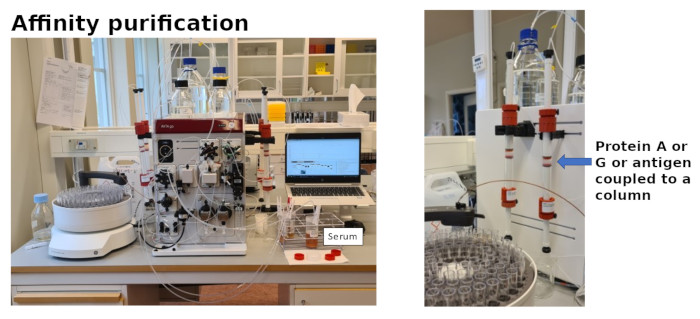| Affinity purified antibodies are obtained though so-called affinity chromatography, which can result in either: (1) a total immunoglobulin fraction, if conducted on Protein A or G (for immunoglobulins of IgG class, including subclasses like IgG1, IgG2, etc.) or (2) specific antibodies against the target protein we aim to detect. What is a difference between these types of purifications, and what are the advantages? Each of these purification methods use the principle of affinity. However, in case (1), total immunoglobulin (IgG) binds through its Fc part, which has affinity for Protein A or G. Therefore, the total IgG pool is purified, and the compounds of serum that contribute to background signals are removed. The resulting pool contains 0.5 - 5 % of the specific antibody. In case (2), a column with the antigen (protein or peptide) used to elicit the antibody in question, is used. This way, specific antibodies, which bind through their antigen-binding domain, are purified. This results in a specific antibody fraction, with > 95 % purity. Both purifications yield working antibodies. However, obtaining a specific antibody fraction makes method (2) more suitable for the detection of proteins of low experssion, as in immunolocalization, antibody labelling and chromatin immunoprecipiatation (ChIP). |
 Make sure that the antibody product information sheet contains not only information about affinity purification, but also which type of purification was employed. Antibodies can either be purified to a total immunoglobulin fraction, which will be described as Protein A or G purified, or to a specific antibody fraction, which will be described as antigen purified. To compensate for the lower amount of specific antibodies/tube in a total immunoglobulin fraction, antibody suppliers will aliquote a larger volume/tube. Therefore, 150 µg of a total immunoglobulin fraction, may still contain less of the specific antibodies, than 50 µg of an affinity purified antibody. |
